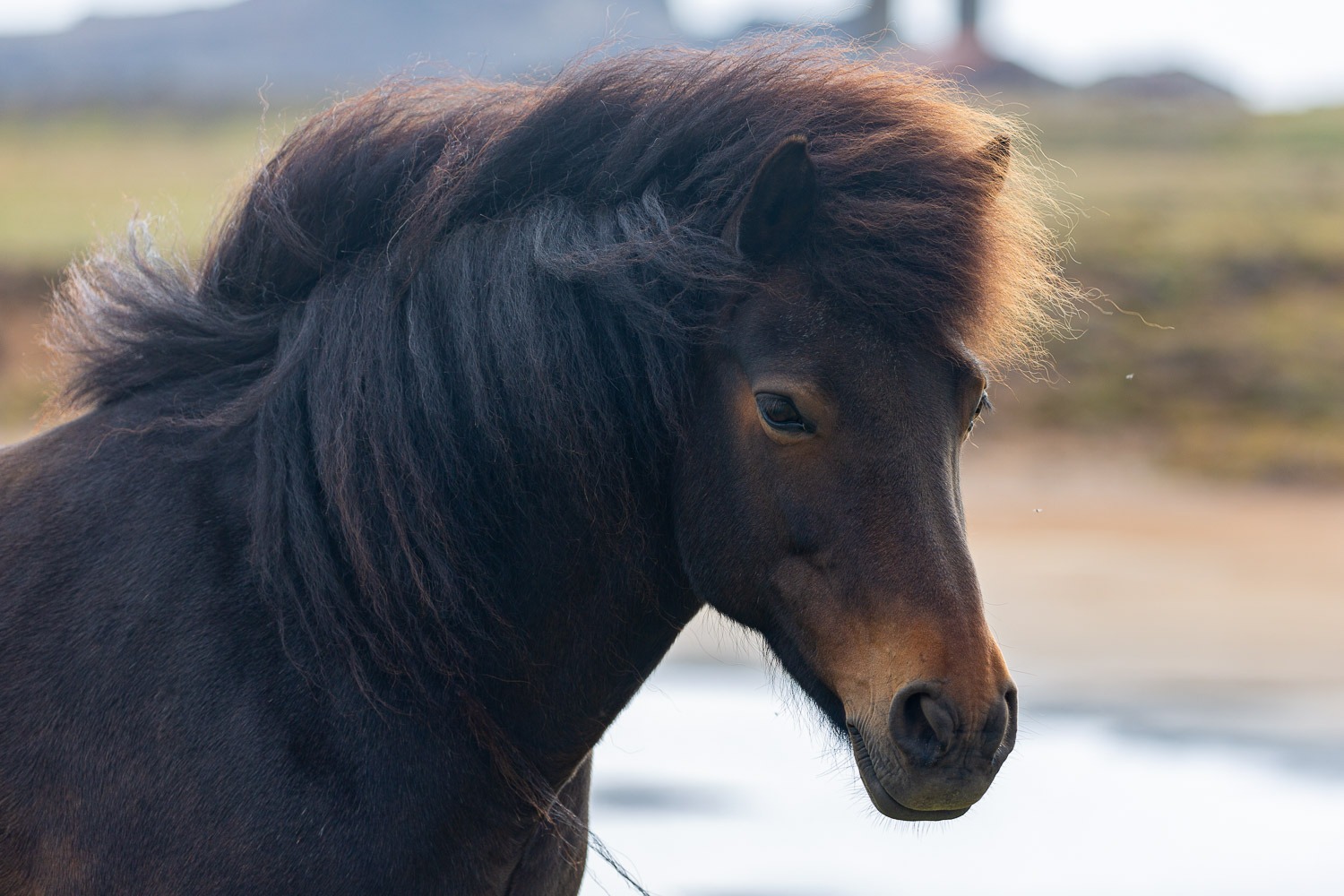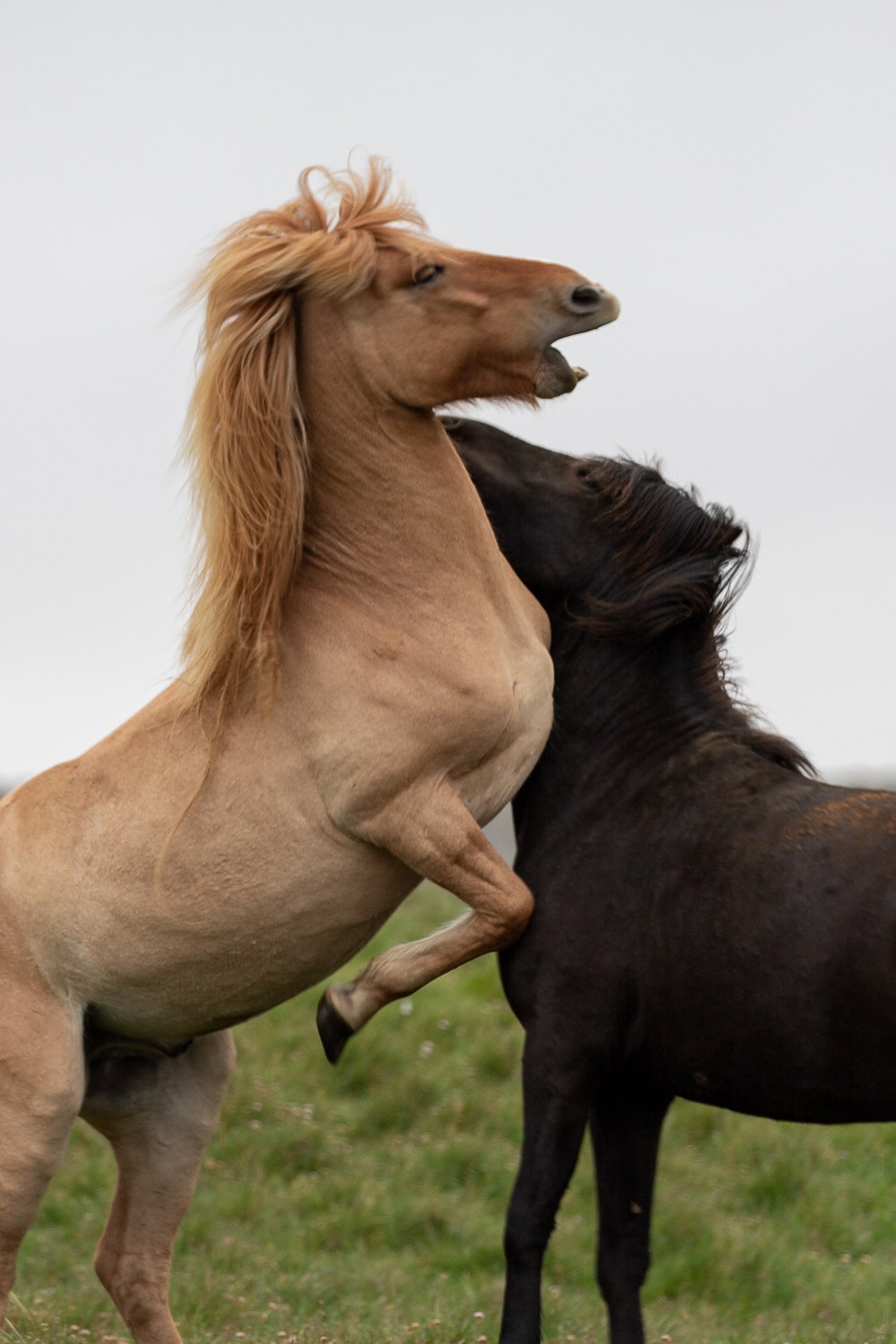Discovering the Icelandic Horse
Icelandic horses hold an iconic status across Iceland, with estimated populations exceeding 800,000 – impressive for an island nation with just under 340,000 human residents. These hardy horses first arrived with Norse settlers over 1100 years ago, tracing their lineage back to steeds of ancient Vikings.
Over centuries of isolation on the rugged volcanic landscape, the Icelandic horse evolved into a distinct pure breed displaying unique adaptation. In 982 AD, Iceland’s governing Alþingi parliament enacted laws forbidding the import of foreign horse bloodlines. This isolation has persisted for over a millennium, resulting in the Icelandic horses remaining the sole surviving form of the ancestral North European breed.
However, restrictions prohibit Icelandic horses exported abroad from returning home, an irreversible policy. Consequently, 60% of registered Icelandic horses today live outside their native land, though the breed remains an integral part of Icelandic heritage and culture.

This article contains links to products and services that I think you will find useful. I may earn a commission on any purchases you make at no cost to you. As an Amazon Associate, I earn from qualifying purchases. Read more HERE
Facts About Icelandic Horses
Though small and stocky in build, Icelandic horses exude big personalities, typically demonstrating a docile temperament and individuality in their interactions. No two horses ever appear identical. Icelandic vocabulary encompasses over one hundred distinct words delineating the diverse colours, coat hues, and mane variations found amongst the breed. Palettes span snow white to toasty caramel, often with multi-coloured markings. This spectrum stems from a lack of selective breeding targeting specific aesthetics.
Their double-layered coat is adapted to the hostile Icelandic environment, allowing endurance amid Iceland’s dynamic climate and rugged topography far better than imported breeds. Between the muscular build, insulating hair, and amenable disposition lies a versatile horse that is perfectly adapted for its home.

How long do Icelandic horses live?
These small horses can live in the elements happily and reach a good age. Many live for more than 40 years with the oldest being in its late 50s.
Why can’t Icelandic horses return from abroad?
These island horses have lived in isolation for so long that their immunity to common equine diseases is compromised. For this reason, any exposure to other horses would be detrimental and due to the ancient act of Parliament once they leave Iceland they cannot return.
WHY ARE ICELANDIC HORSES NOT PONIES?
In other parts of the world, small horses are a pony but there are a few more characteristics to fulfil the pony criteria. While Icelandic horses are usually below 14.2 hands, the criteria for a pony, their legs are actually in proportion to their bodies. Classic ponies, like the Exmoor pony, have short legs and wide bodies, a very different build to the Icelandic horse.
The personality of Icelandic horses also plays a part in their classification as a horse. Ponies tend to be more docile while horses have a spirit about them. The Icelandic horses definitely have personalities and are as feisty as any thoroughbred.


The unique gait of an Icelandic horse
In addition to the typical walk, trot and canter gaits of most horses, Icelandic horses possess two unique gaits likely stemming from an ancestral gene mutation – the tölt and skeið.
When performing the tölt, the horse’s hooves remain in continual contact with the ground as they move fluidly across a landscape. This provides the rider with a smooth, stabilized riding experience without the jarring up-and-down bounce associated with a trotting gait.
The flying pace or “skeið” constitutes a rapid lateral movement in which legs on each side stride in unison, closely resembling a running human. At full gallop, brief phases occur where no hooves touch the earth.
While both gaits have developed because of the Viking’s selective breeding practices, the tölt is especially useful as it helps these horses easily navigate the rocky and uneven terrain of Iceland’s volcanic landscapes.
Are Icelandic horses wild?
The horses are semi-wild. In the summer months, they roam the highlands gazing on the thyme-filled hillside. However, in the winter months, the farmers round them up and bring them to lower ground.
In the autumn they are moved down from the highlands in herds with fast-moving dogs and farmers on horseback, a spectacle worth seeing. Driving around it may seem that the horses are ‘wild’, but they are all owned and all will be accounted for.


Best places to see Icelandic horses
You will see horses all around Iceland. For the best encounters with Icelandic horses, it is worth visiting a farm. The horses here will be used to contact, you will not have to worry about roads and you can spend as much time as you want with them. You will also learn so much about their lives and farming in Iceland that it is more than just a ‘farm visit’.
Private Land and Road Safety
You will see horses in fields everywhere but remember these fields are private land and you can’t just jump a fence to get closer. Many of the fields have signs requesting the horses are not petted or fed and these should be acknowledged.
Road safety is also a big consideration. Road 1 is a main road and vehicles move fast. You can’t just pull over when you see a horse you fancy photographing. There are safe stopping places but most are not near the horses.

Places to Ride Horses in Iceland
Solhéster Horse Rental is located in Ölfus and will take you riding around the Ingólfsfjall Mountain. the route they take is about 10km long and if you are an experienced rider then you can try the tölt for yourself. This company also run riding experiences with a pickup in Reykjavík.
It is also possible to ride along the iconic Black Sand beach in Vík. Eldhestar offers a whole range of horse riding experiences in Iceland including riding holidays.
In the north Lava Horse offers beautiful riding tours around Húsavík. They have short tours for beginners or all-day tours for more experienced riders.
Are Icelandic Horses good for beginners?
As the Icelandic horses are so calm and also solid they are ideal for learning to ride. Many of the riding centres will offer lessons or treks for beginners.
Why are there so many horses in Iceland?
The exceptionally large population of Icelandic horses serves multiple purposes, from recreation to food production. Riding schools and small farms gain a valuable source of income from the tourist industry providing demonstrations, riding experiences and ‘petting experiences’. During the summer months, horses play an indispensable role in agricultural communities where they are used for herding free-grazing sheep across remote highland pastures.
More controversially, a portion of foals are bred specifically for export to countries like Japan for consumption as a delicacy. Horse meat appears commonly on restaurant menus, contributing notable economic value, yet traditional harvesting coexists awkwardly alongside sentimental national pride in the Icelandic horse as a beloved cultural icon.

Photographing Icelandic Horses
If you visit a farm then photography of Icelandic horses is an amazing experience. I found using a 100-400mm lens helped greatly away from farms but a 24-70mm lens is ideal when you are up close and personal with the horses.
Hand-holding the camera is essential as the horses do not stay still. If you have it on your camera make sure that image stabilisation is switched on. Set the aperture so that most of the face is in focus.
This will be somewhere between f/5.6 and f/8. As the camera is being hand-held make sure that your shutter speed is fast. This can be achieved by increasing your ISO to around 400 (higher if the light is poor) however an ISO of 100 is ideal if possible to reduce noise.
Icelandic horses can be photographed easily using a phone or point-and-shoot camera as well.

Planning a road trip to Iceland? Read all my Iceland Travel Guides